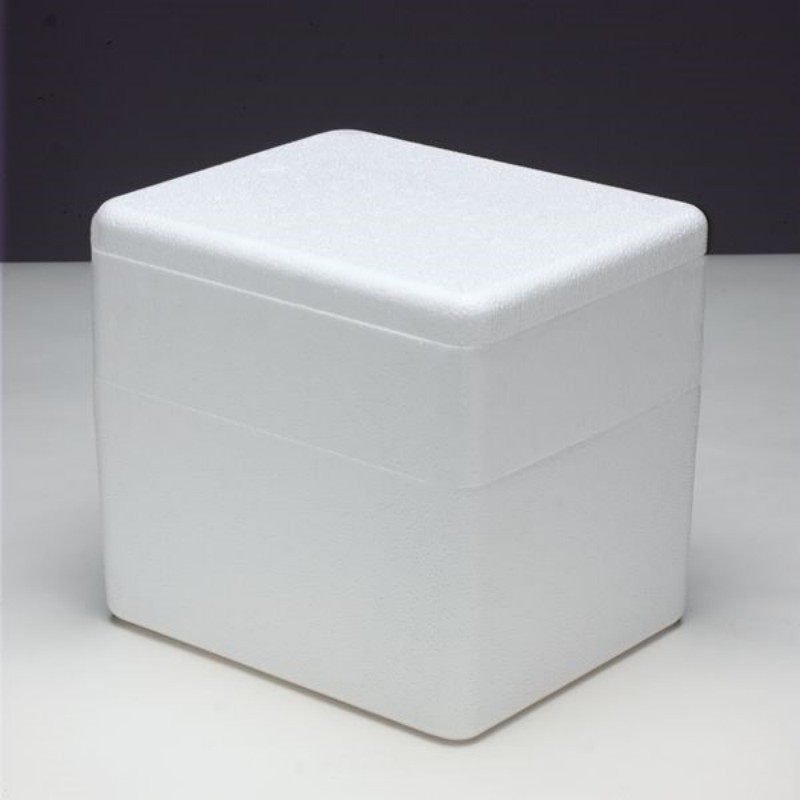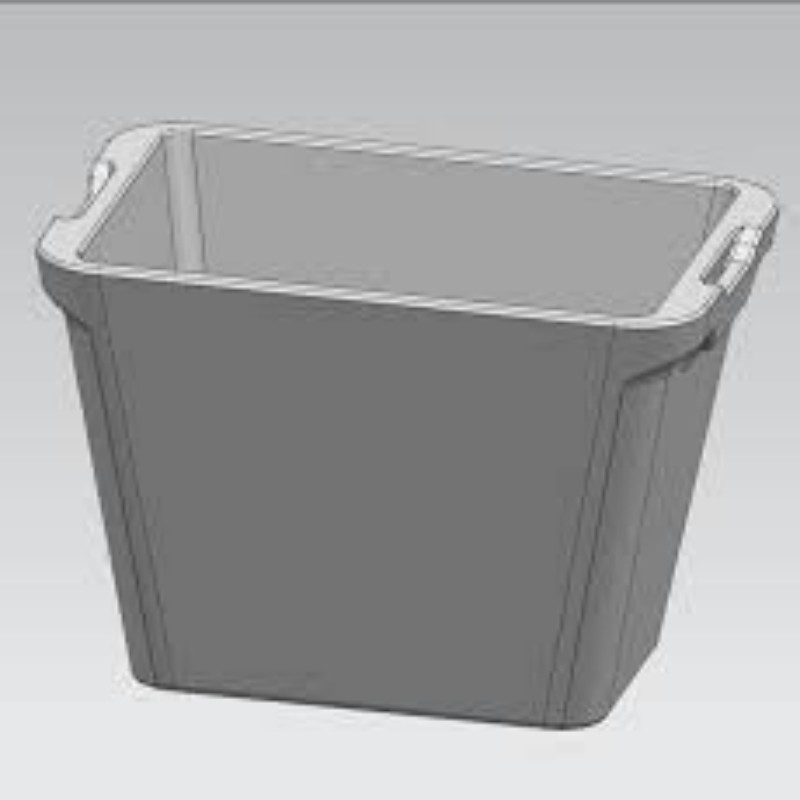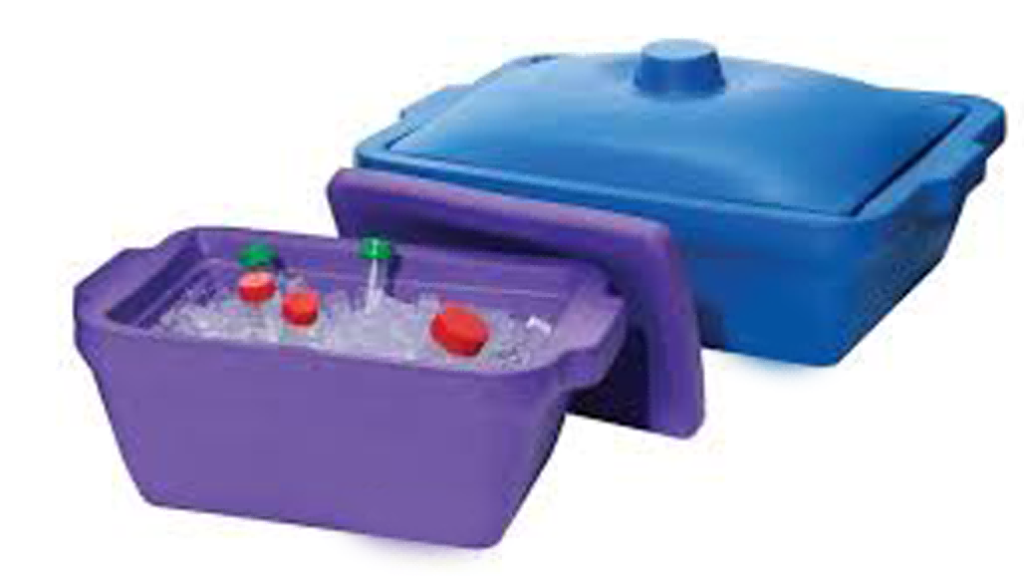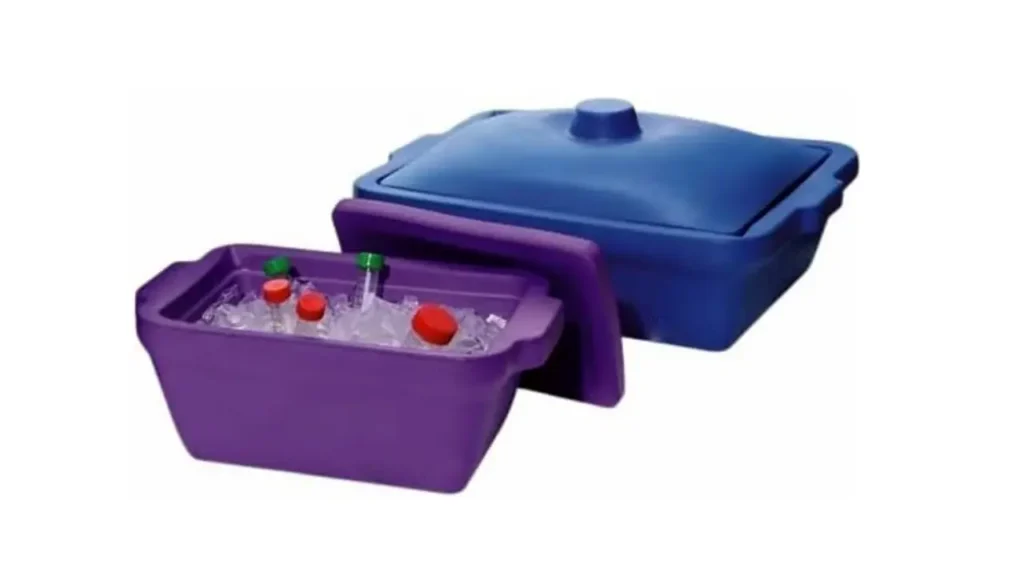Ice boxes are portable containers used to refrigerate, preserve or freeze items, and are widely used in outdoor travel, medical transportation, food preservation, etc.
As people’s demand for portable refrigeration increases, the types and functions of ice boxes are becoming increasingly diverse.
The History of Ice Boxes
Early Origins
The concept of the ice box dates back centuries:
- Ancient civilizations used snow-packed underground pits and insulated containers
- 18th century saw the development of wooden ice cabinets in Europe
- Early 1800s marked the first commercially produced ice boxes in America
Golden Age of Ice Boxes (1850-1930)
During this period, ice boxes became standard household items:
- Mass production made them affordable for middle-class families
- Daily ice delivery services emerged in urban areas
- Design improvements included better insulation and drainage systems
Decline and Legacy
The advent of electric refrigeration in the 1930s led to:
- Gradual phasing out of traditional ice boxes
- Transformation into modern portable coolers
- Nostalgic revival as decorative antique pieces
Definition and basic functions of ice boxes

1.What is an ice box?
An ice box, also known as an insulated ice box, a cold storage box or a fresh-keeping box, is a container that uses insulation materials and cold storage technology to maintain a low-temperature environment.
It is usually used for short-distance transportation of food, medicines, vaccines and other items that need to be stored at low temperatures.
2.Core functions of ice boxes
Insulation and freshness preservation: Maintain low temperatures through insulation layers and ice bags/ice plates to extend the freshness of food and beverages.
Portability: Lightweight design, suitable for outdoor activities such as camping, picnics, fishing, etc.
Medical refrigeration: Some professional ice boxes can be used to transport medicines, vaccines, biological samples, etc.
Energy saving and environmental protection: Compared with car refrigerators, ice boxes do not require electricity, are more environmentally friendly and low cost.
Types and characteristics of ice boxes
Ice boxes can be divided into many types according to different materials, uses and refrigeration methods. The following are common classifications:
Classification by material
Type Characteristics Applicable scenarios
Plastic ice boxes Lightweight, low price, but short insulation time (4-12 hours) Daily use, short-distance travel
Metal ice boxes Durable, good insulation (12-24 hours), but heavy Long-distance travel, car refrigeration
Foam ice boxes Extremely low cost, general insulation (4-8 hours), suitable for one-time use Fresh delivery, temporary refrigeration needs
Hard shell ice boxes High-density insulation layer, long insulation time (24-48 hours), strong pressure resistance Professional outdoor, medical cold chain transportation
Classification by refrigeration method
Ordinary ice boxes: rely on ice bags or ice cubes for refrigeration, suitable for short-term use.
Cold storage ice boxes: built-in phase change materials (such as gel ice plates), can be repeatedly frozen, and insulation is more durable.
Electronic ice box: with semiconductor cooling chip, needs to be connected to USB/power supply, suitable for car or fixed scene use.
Classification by use
Household ice box: small design, suitable for daily preservation of beverages, fruits, etc.
Outdoor ice box: large capacity, anti-fall design, suitable for camping, fishing and other scenes.
Medical ice box: meets GSP standards, precise temperature control, used for transportation of medicines and vaccines.
Commercial ice box: super large capacity, suitable for catering take-out and fresh food delivery.
Common foam ice box material types
EPP (expanded polypropylene)
Features: lightweight, impact-resistant, reusable, environmentally friendly (recyclable).
Applications: high-end refrigerators, pharmaceutical cold chain boxes.
EPS (expanded polystyrene)
Features: low cost, good thermal insulation, but fragile and non-degradable.
Applications: disposable cold chain packaging, seafood transport boxes.
PU (polyurethane foam)
Features: excellent thermal insulation performance (commonly used in refrigerator interlayers), requires infusion foaming.
Production process of EPP/EPS foam ice box (taking EPP as an example)
1.Raw material preparation
EPP beads: Select pre-expanded polypropylene particles with appropriate particle size (usually 1~5mm), density range 15~100g/L (affects thermal insulation and weight).
2.Pre-foaming
The beads are pre-expanded by steam to increase the volume to the target density (control the foaming ratio).
3.Mold forming
Mold design:Aluminum alloy or stainless steel mold, the inner cavity is in the shape of an ice box (including the lid and internal compartment structure).The mold needs to reserve steam channels and exhaust holes.
Molding steps:
- Filling: Inject pre-foamed beads into the mold cavity.
- Steam heating: Pass high-temperature steam (110~130℃), the beads expand secondary and fuse into one.
- Cooling and shaping: Water-cooling or air-cooling the mold to solidify the product.
- Demolding: Open the mold and take out the molded ice box blank.
4.Post-processing
Trimming: Remove burrs and mold lines.
Assembly: Paste sealing strips (such as EPE pearl cotton), hinges, locks and other accessories.
Testing: Thermal insulation performance test (such as testing melting time by filling ice cubes).
Differences in the production of EPS foam ice boxes
Molding process:
EPS usually uses “compression molding” or “cutting molding”:
Compression molding: pre-foamed beads are directly molded in the mold (similar to EPP).
Cutting: Cut large pieces of EPS sheets into the desired shape using CNC machines or hot wires (low cost but poor precision).
Surface treatment:
EPS needs to be coated or coated to enhance waterproofness (EPP itself has better waterproofness).
Special process of PU foam ice boxes
Infusion foaming:
Liquid polyurethane (A/B components) is injected into the cavity of the ice box shell (such as the interlayer of the plastic shell).
Chemical reaction foaming fills the entire space to form an insulation layer.
Application scenarios:
Commonly used in ice boxes that require super insulation (such as medical vaccine boxes).
Key quality control points
Insulation performance:
Foam density and closed cell rate determine the insulation effect (EPP/PU is better than EPS).
Sealing:
The fit between the lid and the box body needs to be strictly tested (silicone sealing strips can be installed).
Durability:
EPP ice boxes can be repeatedly dropped (anti-fall), and EPS needs to avoid violent transportation.
Working Principle of Ice Box

The thermal insulation performance of ice box mainly depends on the following technologies:
Insulation material
Polyurethane foam: Common in high-end ice boxes, with the best thermal insulation effect.
EPS foam (polystyrene): Low cost, but average thermal insulation, mostly used in disposable ice boxes.
Vacuum insulation layer: Some high-end ice boxes use vacuum insulation technology to greatly increase the thermal insulation time.
Cold storage medium
Ice cubes/ice bags: Traditional refrigeration method, low cost but melts quickly.
Gel ice plate: Phase change material (PCM), can maintain low temperature for a long time and can be repeatedly frozen and used.
Dry ice: Ultra-low temperature (-78°C), suitable for special needs (such as biological sample transportation).
Sealing design
Good sealing strips (such as silicone sealing rings) can reduce cold air loss and improve thermal insulation effect.
How to make ice boxes?
Preparation
Mold selection
Choose a suitable mold according to the size, shape and function of the ice box you want to make. Common mold materials include silicone, plastic, metal, etc.
Silicone molds are flexible and easy to demold, suitable for making complex ice boxes;
plastic molds are affordable and durable, and are often used to make regular-shaped ice boxes;
metal molds have fast heat conduction and can accelerate the freezing process, but demolding is relatively difficult.
At the same time, ensure the quality of the mold and make the surface smooth and flawless to avoid affecting the appearance and use of the ice box.
Material preparation
Main materials: Food-grade plastic particles (such as polypropylene PP, polyethylene PE) are commonly used materials for making ice boxes.
They have good low-temperature resistance, are safe and non-toxic, and meet food contact standards.
You can also choose food-grade silicone, which is environmentally friendly and non-toxic, and can still maintain good flexibility and stability in low-temperature environments.
Auxiliary materials: Release agent (such as silicone oil, special plastic release agent) is used to reduce the friction between the material and the mold, making it easier for the molded ice box to be removed from the mold;
masterbatch can be added according to personal preference to color the ice box, but be careful to choose food-grade masterbatch to ensure safety.
Equipment preparation
Injection molding equipment (for plastic ice boxes): including injection molding machine, mold frame, etc.
The injection molding machine injects molten plastic into the mold cavity by heating and pressurizing, and forms an ice box after cooling and solidification.
Before use, the temperature control system and pressure control system of the injection molding machine need to be checked and debugged to ensure that the equipment operates normally.
Vulcanization equipment (for silicone ice boxes): If the compression molding process is used, a flat vulcanizer is required; if the extrusion molding process is used, an extruder and corresponding mold vulcanization equipment are required.
Before use, the various parameters of the equipment should also be checked to ensure that it meets the requirements of silicone molding.
Other tools: protective equipment such as gloves and goggles to protect the safety of operators; cleaning tools such as rags and brushes to clean the mold to ensure that the mold surface is clean and free of impurities.
Production process
Raw material processing
Plastic raw material processing: Put food-grade plastic particles into the dryer, set the appropriate drying temperature and time according to the characteristics of the plastic particles (generally PP material drying temperature is 80-90℃, drying time is 2-3 hours;
PE material drying temperature is 60-70℃, drying time is 1-2 hours), remove moisture from the raw materials, and prevent defects such as bubbles and silver wires during the molding process.
After drying, add the plastic particles to the hopper of the injection molding machine.
Silicone raw material processing: If it is solid silica gel, it is necessary to fully mix the silica gel raw material and the vulcanizer in a certain proportion (generally 1-2%), and mix them through a rubber mixer to make the vulcanizer evenly dispersed in the silica gel;
if it is liquid silica gel, just stir the two components A and B in the specified proportion (usually 1:1) evenly.
Mold installation and debugging
Mold installation: Install the selected mold on the corresponding equipment.
For injection molds, ensure that the gate and runner of the mold are accurately connected with the nozzle of the injection molding machine;
for silicone molds, ensure that the parting surface of the mold is tightly fitted during installation to prevent silicone from overflowing during the vulcanization process.
Debug the mold: After installation, debug the mold.
Check whether the opening and closing of the mold is smooth and whether each component can work normally through the opening and closing of the equipment.
At the same time, adjust the temperature of the mold to reach the appropriate molding temperature
(the temperature of the injection mold is generally 40-80℃, the temperature of the silicone mold compression molding is 150-180℃, and the temperature of the extrusion molding is 120-160℃).
Molding process
Injection molding (plastic ice box): Start the injection molding machine, and inject the plastic heated to a molten state into the mold cavity at a certain pressure and speed through the push of the screw.
During the injection molding process, it is necessary to control the parameters such as injection pressure, injection speed and holding time (the injection pressure is generally 60-150MPa, the injection speed is adjusted according to the size and complexity of the product,
and the holding time is generally 5-15 seconds) to ensure that the plastic can fill the mold cavity and that the dimensional accuracy and appearance quality of the ice box meet the requirements.
After the injection molding is completed, a certain pressure is maintained for holding pressure to compensate for the shrinkage of the plastic during the cooling process, and then enter the cooling stage.
The ice box is cooled and solidified through the cooling system of the mold.
The cooling time depends on the thickness of the ice box and the characteristics of the plastic, and is generally 10-30 seconds.
Vulcanization molding (silicone ice box):
Compression molding: Put the mixed solid silicone raw material into the mold cavity, and after the mold is closed, a certain pressure (generally 10-30MPa) and temperature are applied through a flat vulcanizer to vulcanize the silicone in the mold.
The vulcanization time depends on the thickness and formula of the silicone, and is generally 3-10 minutes.
Extrusion molding: The mixed liquid silicone is conveyed to the mold head through the screw of the extruder and extruded under pressure. The extruded silicone strip needs to be vulcanized through a vulcanization tunnel.
The vulcanization temperature and time are adjusted according to the type of silicone and product requirements. The general temperature is 120-180℃ and the time is 1-5 minutes.
Demolding and post-processing
Demolding: When the ice box is cooled and solidified or the vulcanization is completed, open the mold for demolding.
For silicone molds, due to their good flexibility, the ice box can be gently removed from the mold;
for plastic molds, an appropriate amount of demolding agent can be sprayed on the mold surface before demolding, and then the ice box can be ejected through the ejection mechanism.
During the demolding process, care should be taken to avoid damage to the ice box to prevent deformation, scratches and other problems.
Post-processing: After demolding, the ice box may have some burrs and flashes, which need to be trimmed and polished with trimming tools (such as scissors, blades, sandpaper, etc.) to make the edges of the ice box smooth and flat.
If there is oil or impurities on the surface of the ice box, you can use detergent and water to clean it, and then dry it or dry it.
For ice boxes that need surface treatment, such as spraying, printing, etc., you can perform corresponding operations according to specific requirements.
Precautions
Strictly abide by the operating procedures of the equipment, use the equipment correctly, and avoid equipment damage or safety accidents caused by improper operation.
When operating injection molding machines, vulcanizers and other equipment, wear protective equipment to prevent burns, mechanical injuries, etc.
Pay attention to the quality and ratio of raw materials to ensure the performance and safety of the ice box.
Raw materials from different batches may differ, and they must be inspected and tested before use.
Maintain and maintain the mold regularly, clean the mold surface, check the wear of the mold, and repair and replace it in time.
A good mold state can ensure the molding quality and production efficiency of the ice box.
During the production process, pay attention to the control of ambient temperature and humidity to avoid environmental factors affecting the performance of the raw materials and the molding process.
Especially for silicone raw materials, high humidity may affect the vulcanization effect, resulting in bubbles and uneven hardness in the ice box.
How to choose an ice box?
Determine the usage scenario
Short trips: Choose a lightweight plastic ice box (such as 20-30L).
Long trips/camping: Prefer metal or hard shell ice boxes (keep warm for more than 24 hours).
Medical refrigeration: Must comply with GSP standards and have precise temperature control (such as 2-8°C vaccine ice boxes).
Pay attention to thermal insulation performance
Insulation time: ordinary ice boxes (6-12 hours), high-end ice boxes (24-72 hours).
Thickness of insulation layer: The thicker the better the thermal insulation effect (≥3cm polyurethane layer is recommended).
Capacity selection
Capacity Applicable number of people Typical use
Below 10L 1-2 people Lunch box, beverage refrigeration
10-30L 3-5 people Family picnic, short trip
30-50L 5-8 people Long-distance self-driving, team camping
Above 50L Commercial/large-scale events Catering distribution, medical cold chain
Other purchase points
Portability: The design with pulleys or straps is more suitable for outdoor use.
Easy to clean: Removable liner or waterproof material is easier to clean.
Brand and after-sales: Prefer well-known brands (such as YETI, Coleman, Igloo, etc.).
Tips for maintaining and using ice boxes

Methods to improve the insulation effect
Pre-cool the ice box: put ice cubes in or freeze for 1-2 hours before use.

Reduce the number of times the lid is opened: frequent opening will accelerate the loss of cold air.
Reasonable placement: ice bags are placed on the top, and the cold air sinks to enhance the cooling effect.
Cleaning and maintenance
Wipe regularly with a neutral detergent to avoid exposure to the sun or scratches from sharp objects.
When not in use for a long time, keep it dry and open the lid for ventilation to prevent odor.
Ice Box vs. Modern Refrigerator
Key Differences
Comparison factors include:
Power source:
- Ice boxes: Passive cooling
- Refrigerators: Electric compression
Temperature consistency:
- Ice boxes: Fluctuates as ice melts
- Refrigerators: Maintains steady temp
Capacity:
- Ice boxes: Limited by ice volume
- Refrigerators: Consistent storage space
Advantages of Ice Boxes
Situations where they excel:
- Off-grid locations
- Temporary outdoor use
- Emergency backup
- Energy-free operation
Advantages of Refrigerators
Superior for:
- Long-term food storage
- Precise temperature control
- Convenient daily access
- Frozen food preservation
Conclusion
As a portable refrigeration solution, ice boxes play an important role in daily life, outdoor travel and medical transportation.
Choosing a suitable ice box requires comprehensive consideration of thermal insulation performance, capacity, material and purpose.
With technological advances, ice boxes will become more intelligent and environmentally friendly in the future, providing users with a more convenient refrigeration experience.
